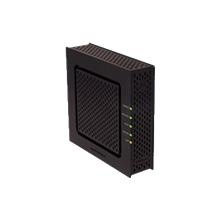![]() Shaw Communications, western Canada’s largest cable company, has expanded its High-Speed Nitro DOCSIS 3 broadband service in British Columbia and Alberta. Offering speeds of 100Mbps downstream and 5Mbps upstream, Shaw charges customers $149 per month for the new plan, assuming you also subscribe to other Shaw services. The three latest cities to obtain upgraded service join Victoria in British Columbia, Saskatoon in Saskatchewan, and Winnipeg, Manitoba, where upgrades were unveiled earlier this year.
Shaw Communications, western Canada’s largest cable company, has expanded its High-Speed Nitro DOCSIS 3 broadband service in British Columbia and Alberta. Offering speeds of 100Mbps downstream and 5Mbps upstream, Shaw charges customers $149 per month for the new plan, assuming you also subscribe to other Shaw services. The three latest cities to obtain upgraded service join Victoria in British Columbia, Saskatoon in Saskatchewan, and Winnipeg, Manitoba, where upgrades were unveiled earlier this year.
“The expansion of High-Speed Nitro into the cities of Calgary, Edmonton and Vancouver demonstrates Shaw’s commitment to continually enhancing our Internet services to meet our customers’ changing needs,” said Peter Bissonnette, President, Shaw Communications Inc.
Paying $150 a month doesn’t buy you unlimited broadband, however. Despite the premium price, Shaw insists on slapping a usage allowance of 400 gigabytes per month. While at first glance that limit seems generous, particularly compared with Comcast’s 250GB limit, paying $150 a month for Internet access apparently is not enough to spare their most generous customers from a pesky Internet Overcharging scheme.
Jeff from Calgary, a Stop the Cap! reader writes, “exactly how much profit does Shaw need to earn from customers before they turn the damn meter off?”
“It’s bad enough with a 100GB limit on their so-called High-Speed Extreme plan, which gives my family up to 15Mbps service for $45 a month. If I am going to pay them $100 more a month for service, there shouldn’t even be a limit,” he adds.
The High-Speed Extreme plan seems to be the pricing “sweet spot” for Shaw, because the next step up in Calgary is High-Speed Warp, which brings 25Mbps service for the warped high price of $96 a month. For nearly twice the price, Shaw only throws another 50GB towards customers’ usage allowances, limiting service to 150GB per month.


 Subscribe
Subscribe




